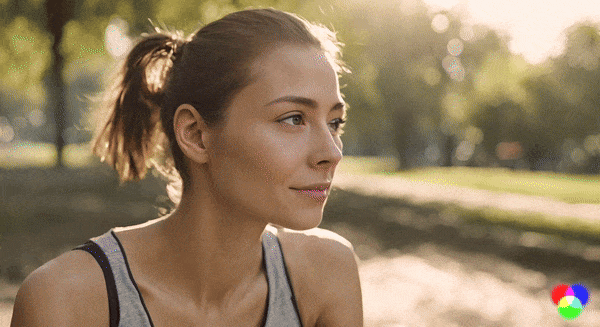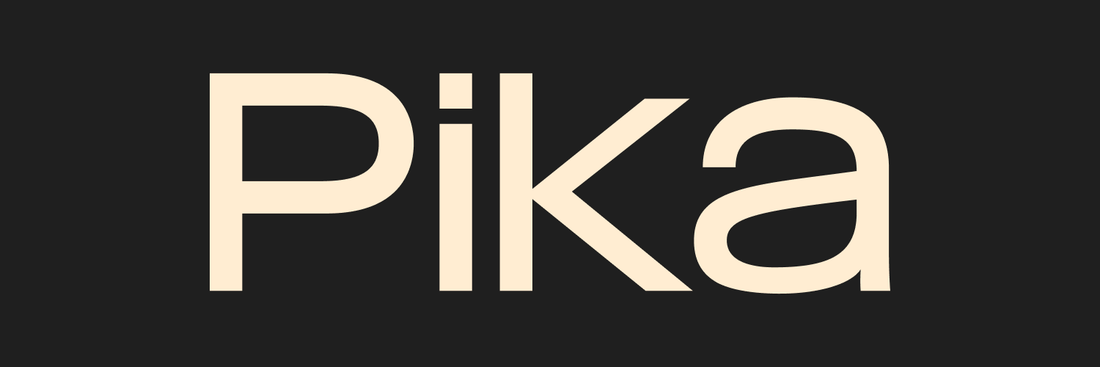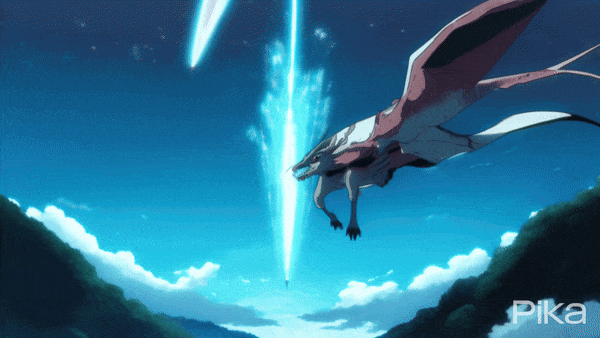
If you haven’t heard about AI by now, we can only assume you’ve been living under a rock or just woken up from a coma.
There’s no dearth of spirited discussion around AI, especially in our industry of video production.
But is it all marketing hype?
Or is there something to the hysteria around how it will decimate jobs and replace skilled workers?
It’s time to set the record straight and figure out what’s really going on.
AI has already started revolutionizing traditional workflows in all sorts of industries, offering a whole new level of efficiency at every stage.

And it’s no exception when it comes to animated video production.
From in-house teams to almost every explainer animation video agency out there, AI has (and is continuing) to make workflows go from good to great.
Using AI, you can:
By integrating AI into the production workflow, creators can unlock unprecedented efficiencies, scalability, and creativity.
To understand how these tools can be customized for better results, checking out prompt engineering examples can provide practical illustrations of how to enhance AI-driven workflows.
And this is already reshaping the future of animated video production.
That said, it’s not some magical perfect solution.
AI comes with a learning curve, and there are drawbacks you should be aware of before blindly leaping in with both feet.
So let’s explore this amazing new world– good and bad.
So how does it all work?
Let’s start by looking at the most popular AI tools and what they do.
Let’s start with where all ideas begin: with scriptwriting.
Here’s how you can use AI to write scripts for you– with the right prompts and instructions, of course.
To keep things practical, we’ll go down the list of the most popular AI tools at each stage of the process.

ChatGPT, developed by OpenAI, revolutionizes scriptwriting by using advanced natural language processing.
Operating on predictive text generation, ChatGPT analyzes prompts to generate coherent responses, accelerating scriptwriting and fueling creativity, making it the leading AI script generator.
The next stage is AI image generation.
Midjourney, accessible on the Discord chat platform, has gained prominence in the creative industry for its endless versatility and is a go-to platform for artists and designers seeking inspiration and creative expression.
It’s fairly simple to use, and you can generate rough sketches for ideations, illustrations in any style, and photo-realistic images of anyone and anywhere - within seconds.

DALL-E, also developed by OpenAI, can produce a wide range of images, spanning from everyday objects to fantastical creatures and surreal landscapes.
RunwayML stands at the forefront of AI and creative expression convergence, offering over 30 tools and models spanning image generation, style transfer, object detection, and motion tracking.

Leonardo.ai lets users generate multiple high-resolution images through text prompts.
It boasts real-time editing and customization, 3D texture generation, and motion asset production, and has the ability to train custom image models.

DreamStudio AI, developed by Stable Diffusion, offers seamless image creation from text prompts.
With advanced features such as CLIP Guidance and Image-To-Image, it caters to diverse applications, from artwork creation to business visuals and educational materials. It also features affordable pricing plans.
Now let’s look into the transformative power of artificial intelligence in reshaping the future of video production and storytelling.

Picture Credit: Freepik
Freepik AI Video Generator offers a new approach to creating dynamic clips by combining creativity with artificial intelligence. It enables users to create engaging stories without needing advanced technical knowledge, making the process of making high-quality videos more accessible and efficient.
Begin with simple text prompts and add references that define the mood, style, or genre of your video. The tool interprets these instructions to generate coherent sequences, allowing you to adjust details and refine the narrative. This process helps creators explore multiple variations and achieve a polished result that aligns with their vision.

As covered earlier, RunwayML offers a range of tools, including the "TI" tool for generating images.
For video generation, there are two tools: "Gen 1" and "Gen 2".
While Gen-1 transforms existing videos using textual instructions, Gen-2 users can generate videos not only with image references but also text prompts, making it a powerful tool for video generation.
Users can input descriptive text prompts and specify key elements such as characters, scenes, and actions.
Gen-2 dynamically interprets these prompts to generate video content.
You can also experiment with different text inputs to explore various narrative possibilities and visual styles, enabling greater customization and refinement.
Here's an example of a video we created using RunwayML:


Pika.art has emerged as a prominent player in the video generation platform arena, disrupting the industry with its innovative approach.
Similar to RunwayML, users can input a text prompt alongside an image or video reference to generate customized videos.
However, unlike RunwayML's diverse toolset, Pika.art concentrates solely on video generation, offering a focused solution to creators.
Pika.art allows you to create video using distinct categories of tools, including Text-to-video, Image-to-video, and Video-to-video through text inputs.
Pika.art's intuitive interface and focused feature set streamline the animation process, empowering creators to bring their ideas to life with clarity and impact.
Here's a video created using Pika.art:

%20(1).png)
Powered by generative AI technology, Synthesia facilitates the creation of avatars capable of speaking in multiple languages and accents, thereby enabling effortless localization of content.
With convincingly human gestures and facial expressions, these avatars find applications across various domains, including training materials, promotional content, educational videos and explainer videos.

Descript caters to a diverse user base spanning from social media content creators to corporate and educational sectors.
Users initiate the video creation process with a script, incorporating AI-enhanced footage and text-generated audio seamlessly.
Its user-friendly interface enhances editing efficiency through intuitive features such as text-driven timeline adjustments.
Of course, no video is complete without a good soundtrack, sound effects (SFX) and voiceovers.
And there’s a range of AI SFX generators and AI music generators to choose from.

By using text prompts, AudioGen empowers users to effortlessly create, explore, and organize a diverse array of music and sound effects.

MusicGen, developed by Meta and accessible via HuggingFace, is primarily geared towards experimentation and research, compared to the more polished AudioGen.
Despite its experimental nature, MusicGen benefits from Meta's robust R&D support, yielding compelling results.
In today's digital age, creating professional-quality voiceovers has never been easier or more accessible.
With the advancements in AI-driven technologies, generating text-to-speech allows creators to produce realistic and natural voiceovers rapidly without compromising quality.
Particularly with tools like Genny, users can craft voiceovers that sound lifelike, enhancing engagement and scalability across various media formats.
Delve into a new era of content creation where ultra-realistic voices empower creators to communicate their stories like never before.
While you’re busy exploring this new world of AI generated content, don’t forget the importance of a good voiceover / narration!
And yes, this is yet another area where AI generation is emerging.
Let’s look at the best tools available out there.
ElevenLabs leads the field in natural-sounding speech synthesis and text-to-speech tools driven by AI.
Through its Speech Synthesis tool, the platform dynamically adjusts intonation and pacing based on contextual language input, enabling the detection and expression of emotions.
Play.ht presents an advanced AI-driven voice generation platform, boasting a diverse library of over 907 AI voices meticulously crafted to offer lifelike Text-to-Speech conversions effortlessly.
The platform also features easy downloading of generated audio files in popular formats like MP3 and WAV.
Murf AI emerges as a robust AI voice generation solution harnessing generative AI and machine learning to deliver authentic voiceovers for diverse projects.
Boasting a repertoire of over 120 human-like voices across 20 languages, users can effortlessly find the ideal voice for their projects. Murf AI also comes with millions of stock music, image, and video assets.

MiDaS stands as an innovative AI tool designed to generate 3D depth maps from user-submitted images.
These 3D depth maps can seamlessly integrate into animation software like Adobe After Effects, enriching still images with depth and enabling captivating animations.
D-iD AI offers a comprehensive suite of AI-powered tools tailored to transforming scripts into engaging videos.
Among its impressive array of features, one standout tool is the ability to transform any portrait photo into a talking avatar.
Adobe, a stalwart in the industry renowned for software like Illustrator and Photoshop, has also embraced the potential of AI with the introduction of the 'Generative Fill' feature.

DraGAN, short for Drag Your GAN, represents a cutting-edge AI tool engineered for enhanced flexibility, precision, and generality in visual content synthesis.
Kaiber emerges as a powerful AI-driven video generation tool empowering users to transform their ideas into captivating visual narratives.
With Kaiber, users can breathe life into their concepts by generating stunning videos from their own images or textual descriptions.
Now that we've explored various types of A.I. tools utilized in the pre-production and production workflow of crafting animated explainer videos, let's delve into some of the creations below.
This is our short film crafted using AI tools called “The Cosmos.”
It’s featured on our Fidoy channel, where we curate and share our own in-house short films. (Feel free to explore our channel!)
Check out this video here:
Here's the workflow employed in crafting the film:
The entire workflow described above was completed within a mere 2 days.
Now, let's delve into explainer videos.
First, let's explore a full infographic video with minimal characters.
Let’s watch the video below.
The following steps were involved in crafting this film:
The duration of the film is 60 seconds.
In a conventional workflow, it would have taken approximately 20-25 days to complete the video.
However, leveraging AI tools, the video was produced in just 9 days.
Despite encountering challenges that necessitated human intervention, the time saved proved to be significant.
Here’s a mixed-media video featuring lifelike footage and line art animation.
Take a moment to watch the video below.
The following steps were involved in crafting this film:
For a video of this nature, a traditional workflow would have demanded approximately 20-25 days.
However, leveraging AI technology, the film was completed in just 7 days.
Lastly, let's examine a character-heavy explainer video.
Here's a breakdown of the workflow:
In a traditional workflow, this film would have required approximately 20-25 days to complete.
However, through the AI-powered workflow, the film was finalized in just 8 days.
Let's examine some drawbacks and potential enhancements in the integration of artificial intelligence (AI) within the realm of animated explainer video production.
Despite its transformative impact, the A.I. workflow in animated explainer video production faces several limitations.
A significant drawback lies in the reliance on predefined algorithms and datasets, which can constrain creativity and flexibility.
AI tools often demand specific inputs and parameters, restricting the range of generated content.
Additionally, mastering AI-powered software involves a steep learning curve, necessitating time and resources for training and implementation.
Ongoing research and innovation in AI technology holds promise for addressing current constraints.
Moreover, fostering collaboration between AI developers, animators, and designers can yield hybrid workflows amalgamating AI strengths with human creativity, resulting in more compelling and impactful animated explainer videos.
Let's explore what lies ahead in the realm of AI-driven innovation and its implications for the future of animated video production.
Currently in the works are tools that continue to push the boundaries of what AI can achieve in animated video production.
Harnessing the power of Dall-E and ChatGPT engines, Sora is the latest text-to-video model from OpenAI, which signifies a remarkable advancement in the field.
Compared to previous AI text-to-video platforms, Sora sets a new standard with its unparalleled quality results.
The rumored platform AI Sound Effects by ElevenLabs can mark a significant milestone in the realm of audio production.
While AI tools for music and sound effects have been scarce, ElevenLabs’ latest offering promises to revolutionize the industry.
Following the success of ChatGPT 3.5 and ChatGPT 4, OpenAI is preparing to unveil ChatGPT 5, the next generation of conversational AI.
The upcoming ChatGPT 5 is poised to further redefine human-AI interaction, offering enhanced features and functionalities.
Lyria, Google DeepMind's cutting-edge AI music generation model, represents a significant advancement in music composition.
Designed to produce high-quality music compositions across diverse genres, Lyria offers unparalleled control over style and performance.
When considering the advancements and challenges discussed regarding AI tools in animated video production, it becomes evident that the future of the creative industry is poised for dynamic growth and innovation.
But despite the remarkable strides made in streamlining workflows and enhancing production efficiency, critical challenges such as maintaining creative control, addressing ethical considerations, and preserving the human touch in artistic expression remain paramount.
By leveraging AI as a catalyst for innovation and expansion rather than a substitute for human ingenuity, the industry can unlock new avenues of storytelling, broaden creative horizons, and captivate audiences in unprecedented ways.
Ultimately, the future holds immense potential to redefine the art form, empower creators, and enrich the viewer experience in profound and transformative ways, ushering in a new era of animated video production that blends the best of human and artificial intelligence.
US Office (Sales & Marketing)
371 Hoes Lane, Suite 200, Piscataway, New Jersey - 08854
US (732) 387-3864
(Render 5 Technologies Pvt. Ltd.)
India Office (Production)
WeWork, 246, Udyog Vihar,
Gurugram, Haryana - 122016
IND (+91) 98713 30069
SERVICES
ANIMATION STYLES
INDUSTRY
Copyright © 2025 Broadcast2World, Inc. All Rights Reserved.
No Comments Yet
Let us know what you think